Retrieval Strength and Storage Strength
A deep dive, with gifs!
There are a bunch of GIFs below. If they aren’t loading, try viewing this post on the web.
Retrieval Strength and Storage Strength
How can teachers help students remember things?
There are lots of things we want students to remember. 8 x 4 = 32. The capital of Virginia is Richmond. Mars is the fourth planet from the sun. Water boils at 100° Celsius and 212° Fahrenheit. There’s more to school learning than remembering facts, but remembering facts is important and I’d like to help students do it as efficiently as possible.
Cognitive scientists divide the strength of memory into two parts. Retrieval strength refers to how easily an idea can be recalled. You probably have high retrieval strength for your phone number and what you ate for dinner last night. If I ask you, you can tell me without any trouble. Storage strength refers to how durable a memory is for the long term. You probably have high storage strength for your phone number — if you don't give anyone your phone number for the next month, you would still remember it. But you probably have low storage strength for what you ate for dinner last night. While you remember it now, you likely won't remember it in a month. Storage strength represents both how slowly retrieval strength declines (because it always declines), and how quickly you can relearn something once you forget it.1
Storage strength and retrieval strength are counterintuitive. High retrieval strength can fool us into thinking we have learned things that actually have low storage strength. The best ways to increase storage strength aren't obvious. I had trouble understanding these ideas for a long time so I built a model to play around with them.
A Model
The first thing to understand is that simply exposing students to an idea is an inefficient way to increase storage strength. Repeated exposure increases retrieval strength quickly. That might seem like learning because the idea becomes easy to recall, but that learning will also fade quickly. Here's an example of what that looks like:
Retrieval strength increases, but then decreases quickly and storage strength barely moves.
A better way to retain an idea is retrieval. Retrieval means actively pulling an idea from memory. This requires some retrieval strength: if the memory isn't retrievable, that doesn't do any good:
Here retrieval is unsuccessful. I can ask you for the capital of Azerbaijan as many times as I want. If you don't know it, no learning will happen.
Instead, we want learners to be exposed to an idea, and then as quickly as possible to begin retrieving it. Here's what that might look like:
Here storage strength increases more. This is a big improvement. First, students need some initial exposure to an idea, then they need to retrieve it from memory to increase storage strength. But that leads us to the most important, and most counterintuitive, property of memory. Storage strength increases most when retrieval strength is relatively low. Repeated retrieval when retrieval strength is high looks like this:
There's an initial increase, but then the benefits taper off. That's what a lot of school learning looks like. Students feel like they’ve mastered something, but when retrieval strength wanes there isn’t much left behind. More effective learning looks like this:
Here retrieval strength declines a bit in between sessions of retrieval. As long as retrieval is successful, lower retrieval strength means a larger increase in storage strength. Recalling an idea when it’s not fresh in your mind requires more effort, and that additional effort boosts storage strength.
There's no shortcut to developing storage strength. It takes time. But in that last example, there are far fewer actual retrievals necessary. This leads to important classroom implications. First, spaced retrieval is more effective for learning than blocked retrieval. And second, since spaced retrieval requires fewer total questions, these questions can be interleaved with other topics, increasing storage strength of multiple topics at once.2
Challenges
Those models look nice and tidy but actual teaching is much messier. My biggest challenge is that I’m juggling retrieval strength and storage strength for lots of different students and lots of different topics at once. There’s no way to do this perfectly all the time. The goal is to use this mental model as a broad guide and to avoid some of the common pitfalls. Don’t waste time on excessive retrieval when retrieval strength is high. Don’t mistake fluent retrieval for high storage strength. Be patient. Make sure students can retrieve ideas successfully. Space out retrieval.
There are also lots of other factors that influence memory. Teachers need to connect new knowledge to what students already know, to get students thinking hard about those connections, to help students understand how to apply what they know in different contexts, and more. But this model of storage strength and retrieval strength is a good place to start, one important component among the others.
This model isn’t perfect. There are some things missing. There are intermediate ways to review ideas between exposure and retrieval. The time scale is ambiguous. The structure of the model isn’t an exact science. (If you’re reading this and you know some of those details, I’d love to learn more!) The goal is to create a mental model that is useful for teachers even if it isn’t perfect.
Here's the website if you want to play with it. Be warned, I'm not a professional developer so there might be bugs and it's a bit finicky on mobile. Still, I’ve had fun experimenting with the model to get a better grasp of storage strength and retrieval strength. If you’d like bonus points, play around with the model a bit until you feel pretty confident you understand it. Then, set yourself a few reminders — in a day, a week, two weeks, a month. Each time see what you remember about storage strength and retrieval strength. Return to the model, and think about how you can use this in your teaching. That’s the type of thinking that will improve your own storage strength of this idea.
Here is a video of researcher Robert Bjork talking about storage strength and retrieval strength if you want to learn a bit more.
Note that interleaving is effective because it allows efficient spaced practice of multiple topics at once, but also because it helps students to learn more deeply because they need to discriminate between different types of problems. The effect here is not only because of the storage strength/retrieval strength distinction I’m describing in this post.


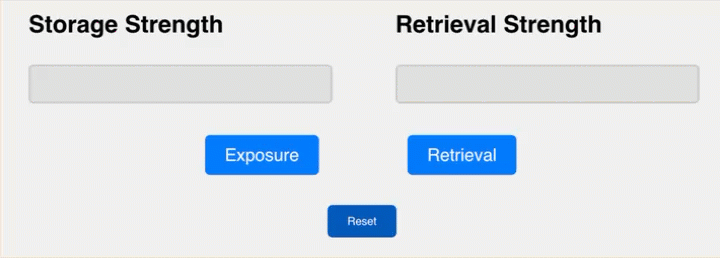
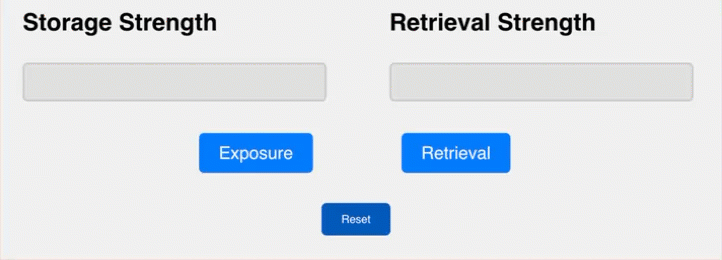
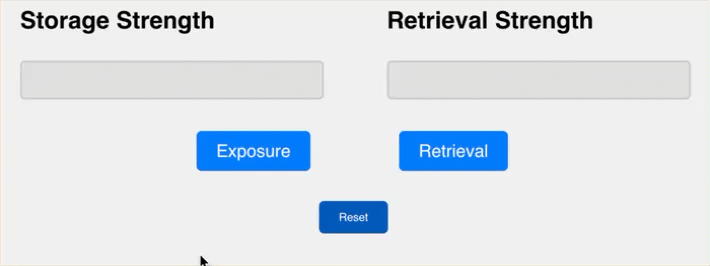
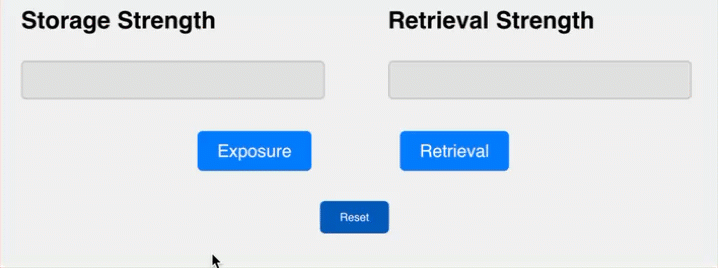
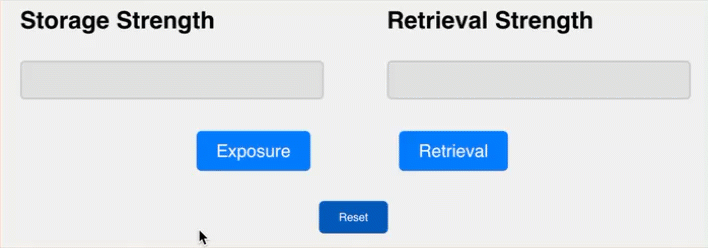
Great post. Are you familiar with the Anki tool for spaced repetition? I've found it to be really useful...wouldn't know how to go about spaced repetition without it frankly (for myself, not for teaching) https://ankiweb.net
H/T this essay by Michael Nielsen: https://augmentingcognition.com/ltm.html
How much of this is just that retrieval is harder than processing an exposure? But that exposure is necessary for retrieval? I think it might be all of it.
The thing is that active production is also more difficult than passive comprehension in lots and lots of areas. (I'm thinking by analogy of P vs NP problems -- identifying solutions is fundamentally easier than generating them.)
So what is the surprise...maybe it's that the feeling associated with exposure and comprehension is so enticing? It FEELS like understanding?
Anyway, great post.